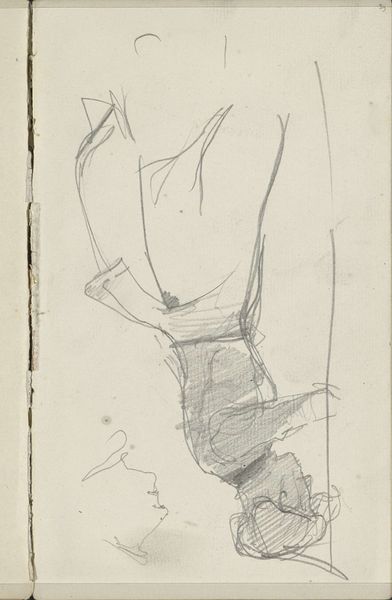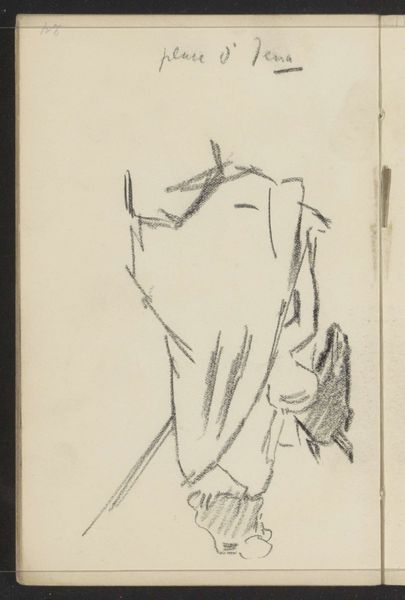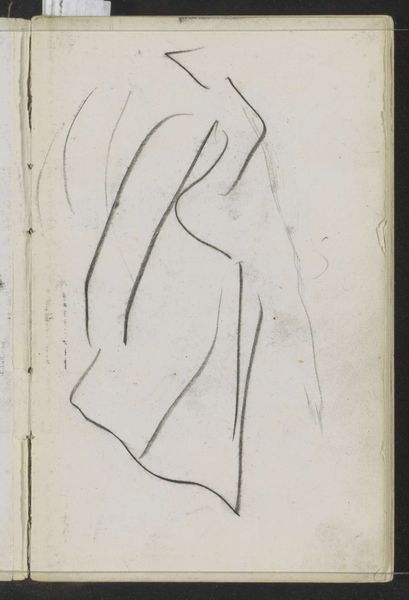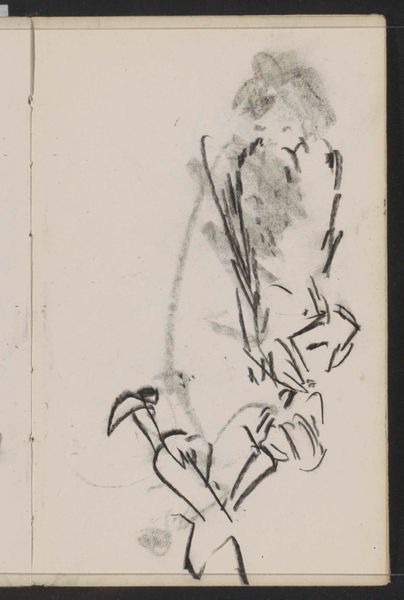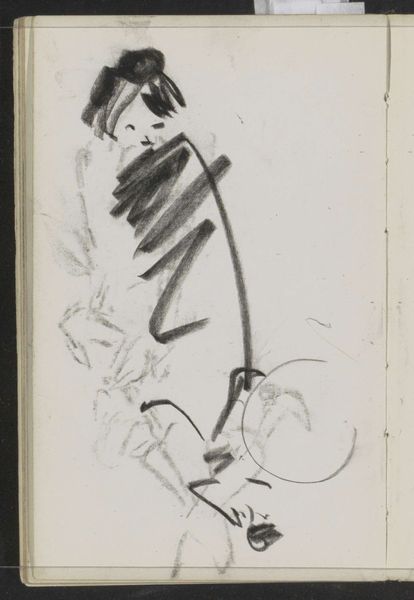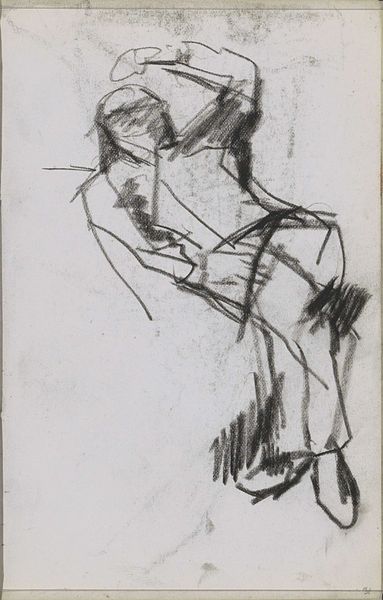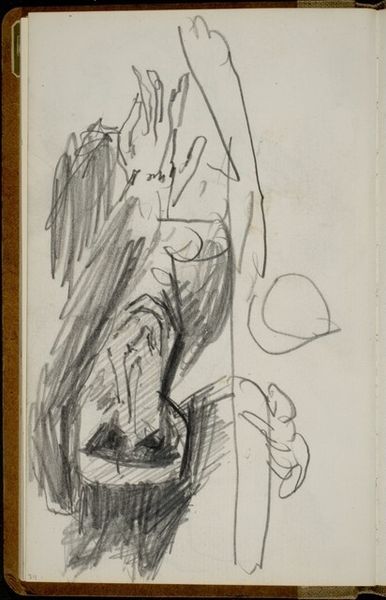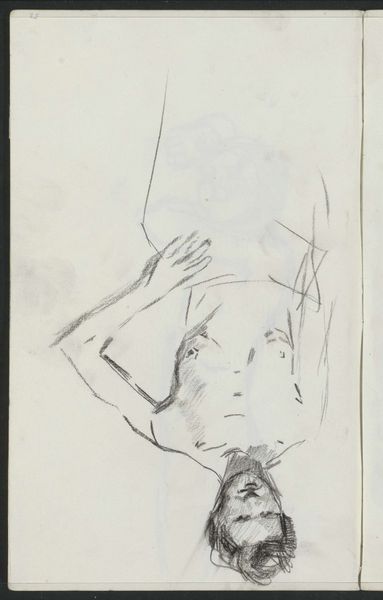
drawing, paper, pencil
#
portrait
#
drawing
#
figuration
#
paper
#
pencil
#
line
#
dress
Copyright: Rijks Museum: Open Domain
Editor: Here we have Carel Adolph Lion Cachet’s pencil drawing, “Standing Girl in a Dress,” made sometime between 1874 and 1945. It’s a simple sketch on paper, but something about the line work feels so expressive. What do you see in this piece, formally speaking? Curator: The immediate impact arises from the linearity itself. Consider the nature of the marks – thin, almost tentative in places, yet defining the form of the figure with relative confidence. The lines do not merely delineate the subject; they create a sense of volume and texture, particularly in the suggestion of the dress's folds. Notice the varying pressure of the pencil, giving depth without shading. Editor: Yes, I see that now. How the varying thickness brings the dress to life. Do you think the quick, sketch-like nature of the lines detracts from the piece? Curator: Quite the contrary. This seeming lack of finish focuses the eye on the very essence of form. Consider the negative space, too. The figure exists dynamically with the plain page; the lack of background strengthens the figure by emphasizing contour and placement, drawing the viewer to appreciate the pure structure of the form. The artist offers enough to provoke, not to resolve. Editor: So it’s about the relationship between line, form and space. It feels so incomplete and so detailed all at once. Curator: Precisely. Incompletion is a key element in modern art; artists present, rather than represent, leading us to engage more actively. The stark contrast in line boldness highlights specific areas and creates the figure's shape on paper. A finished painting might tell a different story, and the expressive element would disappear. Editor: Thank you. Looking closely at line work, I learned so much. Curator: Agreed, the medium in combination with form underscores what can be achieved through artistic discipline.
Comments
No comments
Be the first to comment and join the conversation on the ultimate creative platform.

